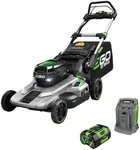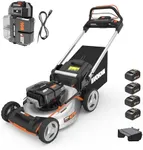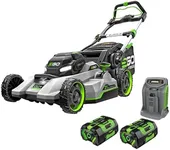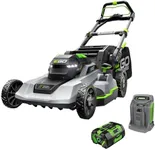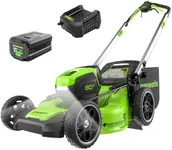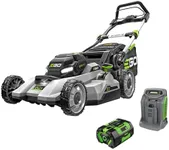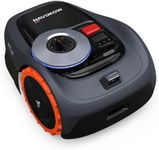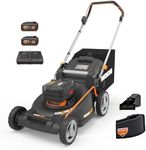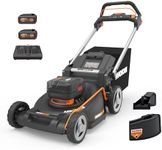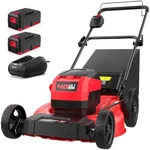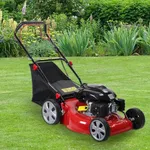Buying Guide for the Best Electric Lawn Mowers
Choosing the right electric lawn mower can significantly improve your lawn care experience. Your decision should consider the size of your yard, the type of terrain, and how much effort you want to put into mowing. Electric mowers are quieter, environmentally friendly, and require less maintenance than gas models. The key is to match the mower's features with your yard's needs and your personal preference for convenience and usability.Power Source (Corded vs. Cordless)Electric lawn mowers come in corded and cordless (battery-powered) versions. Corded mowers draw power directly from an outlet with an extension cord, which means unlimited run time but potential restrictions in movement due to cord length. Cordless models use rechargeable batteries, offering more freedom of movement but may have a limited running time per charge. If you have a smaller yard close to an outlet, a corded model can be very practical. For larger yards or areas without easy access to power, cordless models offer more flexibility, though you'll need to consider battery capacity and charging time.
Cutting WidthThe cutting width refers to how wide a path the mower cuts in one pass. Common widths range from 14 inches to 21 inches or more. Wider cutting widths let you mow faster, covering more ground in less time, but they can make the mower heavier or harder to maneuver in tight spaces. For small or heavily landscaped yards, a narrower mower may be easier to navigate, while larger, open lawns benefit from wider cutting decks.
Battery Capacity and RuntimeFor cordless mowers, battery capacity, measured in amp-hours (Ah), affects how long the mower can run on a single charge. Lower capacities (around 2-4Ah) suit small yards, providing 20-30 minutes of mowing, while higher capacities (5Ah or more) are better for larger yards and extended runtime—sometimes up to an hour or more. Consider how long it takes to mow your entire yard and choose a mower with a battery that matches that time, or look for models that allow quick battery swaps.
Cutting Height AdjustmentCutting height adjustment lets you control how short you cut your grass. Most mowers offer several settings, typically from 1 inch to 4 inches. Taller settings help during the growing season or for coarse or uneven grass, while lower cuts give a neatly manicured look. Look for mowers with easy-to-use controls for adjusting the cutting height, preferably through a single lever for convenience. Match the height range to your grass type and mowing preferences.
Grass Clipping ManagementElectric mowers generally offer options for handling grass clippings: bagging, mulching, or side discharge. Bagging collects clippings in an attached bag for disposal or composting, keeping the lawn tidy. Mulching chops clippings finely and returns them to the lawn as natural fertilizer, while side discharge expels them to one side. If you prefer a tidy lawn or have allergies, bagging might be best; if you want to nurture your lawn naturally, mulching is a good option; side discharge is convenient for less formal mowing. Choose a mower with your preferred clipping management style.
Weight and ManeuverabilityThe weight of the mower affects how easy it is to push and turn, especially around obstacles or slopes. Lighter models are easier to use for most people and suit smaller, flat yards or gardens with many turns. Heavier mowers may have more cutting power or a sturdier build but can be challenging to maneuver. Some models offer self-propulsion, where the mower helps push itself forward, which is a great help for larger or sloped lawns. Choose a mower that matches your physical comfort with the terrain of your yard.
